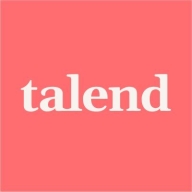

SnapLogic and Talend Data Integration are products in the data integration category. Talend appears to have an edge due to its comprehensive feature set, making it a worthwhile investment despite its pricing.
Features: SnapLogic is known for its advanced automation capabilities, seamless integration with various platforms, and fast deployment. Talend shines with its robust suite of data management tools, exceptional transformation features, and code generation efficiency.
Room for Improvement: SnapLogic could improve by enhancing its detailed error handling and providing more extensive data transformation options. Additionally, SnapLogic's platform could benefit from richer context variables for better environment management. Talend, on the other hand, may enhance its user interface for more intuitive handling and reduce setup complexity to match SnapLogic's ease of use. Talend could also improve its initial deployment speed and seamless cloud integration capabilities.
Ease of Deployment and Customer Service: SnapLogic offers quick deployment and responsive support, ensuring smooth implementations with lesser downtime. Talend requires a more involved setup process but compensates with a supportive, detailed customer service system that aids users in handling complex configurations.
Pricing and ROI: SnapLogic presents a competitive pricing model that offers clear ROI benefits for budget-conscious businesses. Talend, despite higher initial setup costs, delivers significant long-term ROI with its advanced features and comprehensive integration capabilities, justifying the investment over time.
SnapLogic is really helpful and processes in very little time, so it doesn't take much time compared to any legacy tool.
It has helped us save a lot of time by automating repetitive data processes and reducing manual interventions.
They didn't want to use separate ETL tools for MDM or for TMC and data preparation, which is all included in one package.
The technical support from SnapLogic is excellent, and I would give it a complete ten.
Some SMEs are allotted for the organization, so in case of any issue, we have their email IDs to contact them for support, including SMEs and community.
The support team is responsive when we raise issues, and they usually provide clear guidance or solutions.
The customer support for Talend Data Integration is very good; whenever I raise a ticket in the customer portal, I immediately receive an email, and follow-up communication is prompt.
I rate the scalability of SnapLogic as eight out of ten.
By using features like job parallelization and modular design, we can expand our data flows without having to rebuild everything.
The scalability of Talend Data Integration is good; if it weren't scalable, it wouldn't be reliable.
I would rate the stability of SnapLogic as nearly ten out of ten.
But recently, in a year, I haven't found many performance issues in SnapLogic.
Once the jobs are properly designed and deployed, they run reliably without major issues.
If the AI capabilities and integrations were more intuitive and easy to learn for new users, it would be greatly beneficial.
They can improve more visuals, with graphical representations, such as how many things can be added, how many users can be added or dropped, and how the back-end nodes can be graphically shown in a better way.
I tend to frequently communicate with SnapLogic to ask for additional features, and they have been responsive.
It would be great to have more ready-to-use connectors for modern cloud and SaaS platforms.
Talend Data Integration can be improved by reducing the license cost, as it is a bit high compared to other tools, which can be a burden for small-scale companies wanting to buy a license.
Regarding ETL, Talend Data Integration is great, but concerning real-time data processing, people are not really sure about Talend Data Integration or might not know how it provides such types of flexibilities.
There would be only one point of improvement if the price could be lower.
SnapLogic is positioned at around seven or eight out of ten in terms of pricing.
My experience with Talend Data Integration's pricing, setup cost, and licensing is that it is a bit higher compared to other tools, making it not very affordable.
I also like the whole child-parent pipeline feature; it allows me to break up a process into smaller pieces and then have one big pipeline that controls these smaller pipelines.
I find SnapLogic to be user-friendly, especially for beginners with limited experience in data engineering or ETL.
It's moving into AI, so we can create AI agents with LLM models. We can use most of the LLM such as Amazon Bedrock, OpenAI, Azure AI.
By automating daily data loading processes, we reduced manual effort by around three or four hours per day, which saved roughly 60 to 80 hours per month.
Flexibility is a key feature I appreciate about Talend Data Integration, especially the integration of Java within it and the ease of integrating with multiple source repositories such as GitHub and Bitbucket.
The best feature of Talend Data Integration is its multiple data DB components; we have almost all the components and also cloud versions, with TMC allowing us to perform data preparation and data stewardship.
| Product | Market Share (%) |
|---|---|
| SnapLogic | 3.4% |
| Talend Data Integration | 1.4% |
| Other | 95.2% |


| Company Size | Count |
|---|---|
| Small Business | 11 |
| Midsize Enterprise | 5 |
| Large Enterprise | 10 |
| Company Size | Count |
|---|---|
| Small Business | 2 |
| Midsize Enterprise | 2 |
| Large Enterprise | 4 |
The SnapLogic Intelligent Integration Platform uses AI-powered workflows to automate all stages of IT integration projects – design, development, deployment, and maintenance – whether on-premises, in the cloud, or in hybrid environments. The platform’s easy-to-use, self-service interface enables both expert and citizen integrators to manage all application integration, data integration, API management, B2B integration, and data engineering projects on a single, scalable platform. With SnapLogic, organizations can connect all of their enterprise systems quickly and easily to automate business processes, accelerate analytics, and drive transformation.
Talend Data Integration efficiently handles data transformation and integration with ease, supporting complex business needs. It enables seamless data management across all sources.
Talend Data Integration offers a robust platform for managing and transforming data. It connects disparate systems, enabling data flow across various environments. Users benefit from its ability to streamline processes and improve data accuracy. Its user-friendly interface and flexibility make it a preferred choice for data integration experts.
What are the key features of Talend Data Integration?In finance, Talend Data Integration enhances transaction data processing and compliance reporting. In healthcare, it ensures accurate patient data management, while in retail, it optimizes inventory and customer data analysis. Its adaptability makes it valuable across multiple sectors, addressing specific industry requirements.
We monitor all Integration Platform as a Service (iPaaS) reviews to prevent fraudulent reviews and keep review quality high. We do not post reviews by company employees or direct competitors. We validate each review for authenticity via cross-reference with LinkedIn, and personal follow-up with the reviewer when necessary.